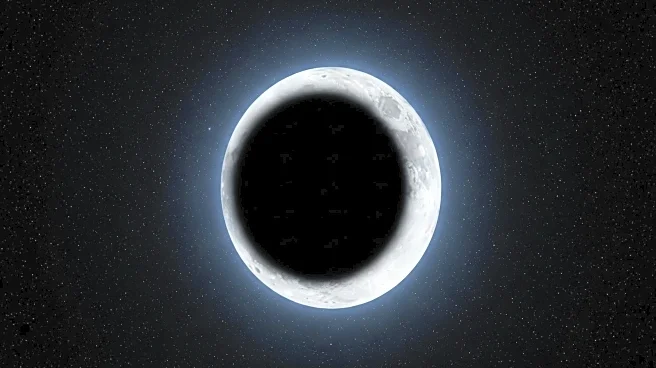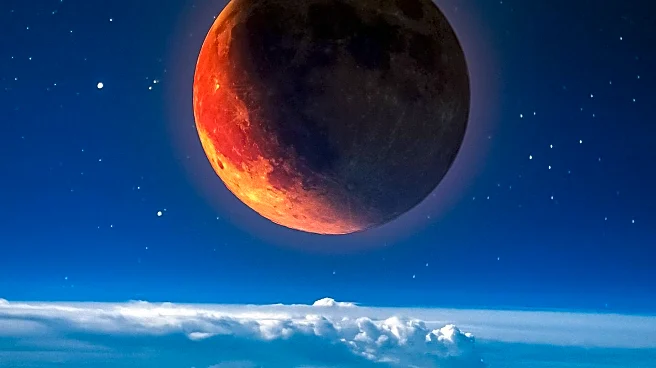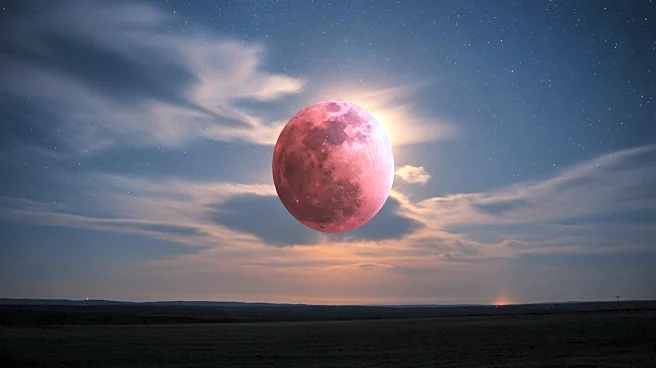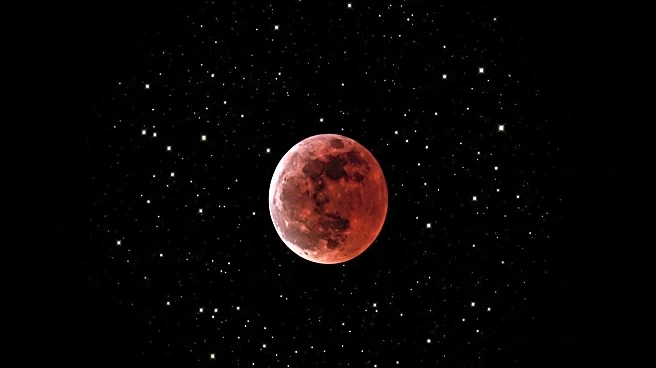What is the story about?
What's Happening?
A total lunar eclipse is set to occur on September 7, 2025, but it will not be visible from the United States. According to Space.com, the eclipse will be fully immersed in the Earth's shadow for 82 minutes of totality between 1:30 and 2:52 p.m. Eastern Time. This astronomical event will be visible in parts of Australia, India, Cairo, and South Africa, with approximately 77% of the world's population able to see the totality. The September full moon, known as the corn moon, will coincide with this eclipse, making it a blood moon due to the reddish appearance caused by Earth's shadow. The next total lunar eclipse visible in the U.S. will occur on March 2-3, 2026.
Why It's Important?
The lunar eclipse is a significant astronomical event that draws interest from scientists and enthusiasts worldwide. While the eclipse will not be visible in North America, it highlights the global nature of celestial phenomena and the interconnectedness of scientific observation. The event provides an opportunity for educational outreach and public engagement in regions where it is visible, fostering interest in astronomy and science. Additionally, the occurrence of a blood moon during the eclipse adds to the spectacle, offering unique observational opportunities for those in visible regions.
What's Next?
For those in the United States, anticipation builds for the next visible total lunar eclipse in March 2026. Meanwhile, regions able to view the September 2025 eclipse may organize public viewing events and educational programs to capitalize on the interest in this rare celestial occurrence. Astronomers and scientists will likely conduct studies and gather data during the eclipse to enhance understanding of lunar and solar interactions.
Beyond the Headlines
The cultural significance of the corn moon and blood moon adds layers to the event, as these phenomena have historical and agricultural ties in various cultures. The corn moon is traditionally associated with the harvest season in the northern United States, while the blood moon has been linked to folklore and mythologies worldwide. These cultural dimensions enrich the scientific narrative, offering a holistic view of the eclipse's impact.
AI Generated Content
Do you find this article useful?
















